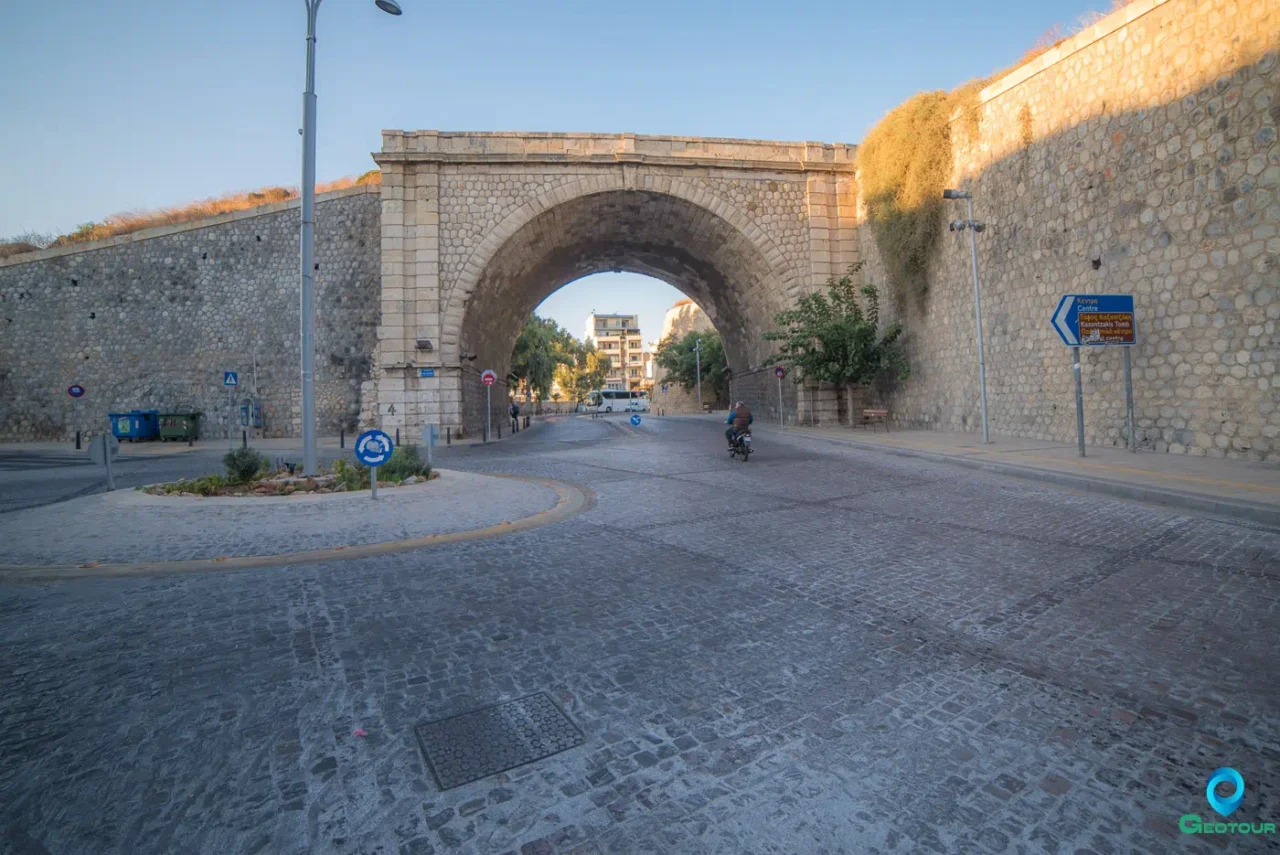
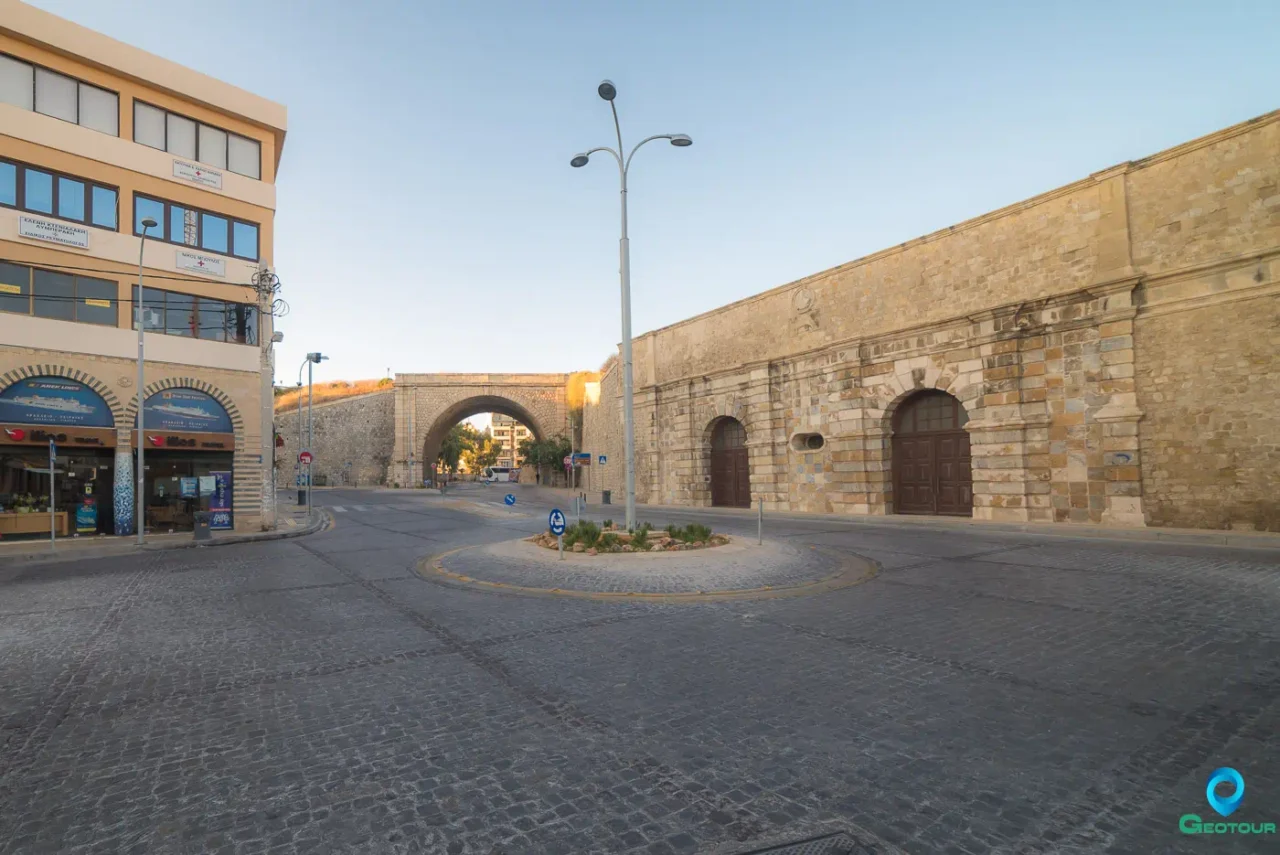
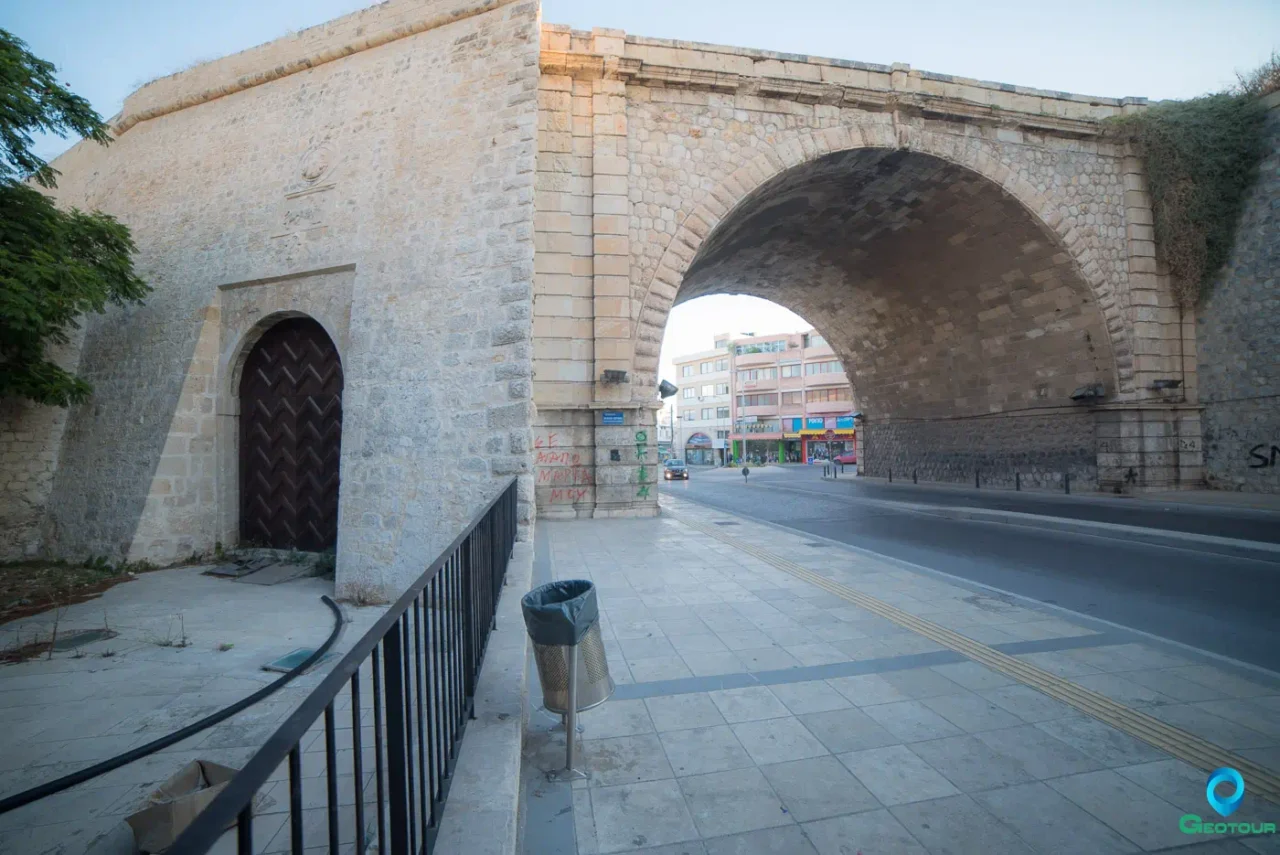
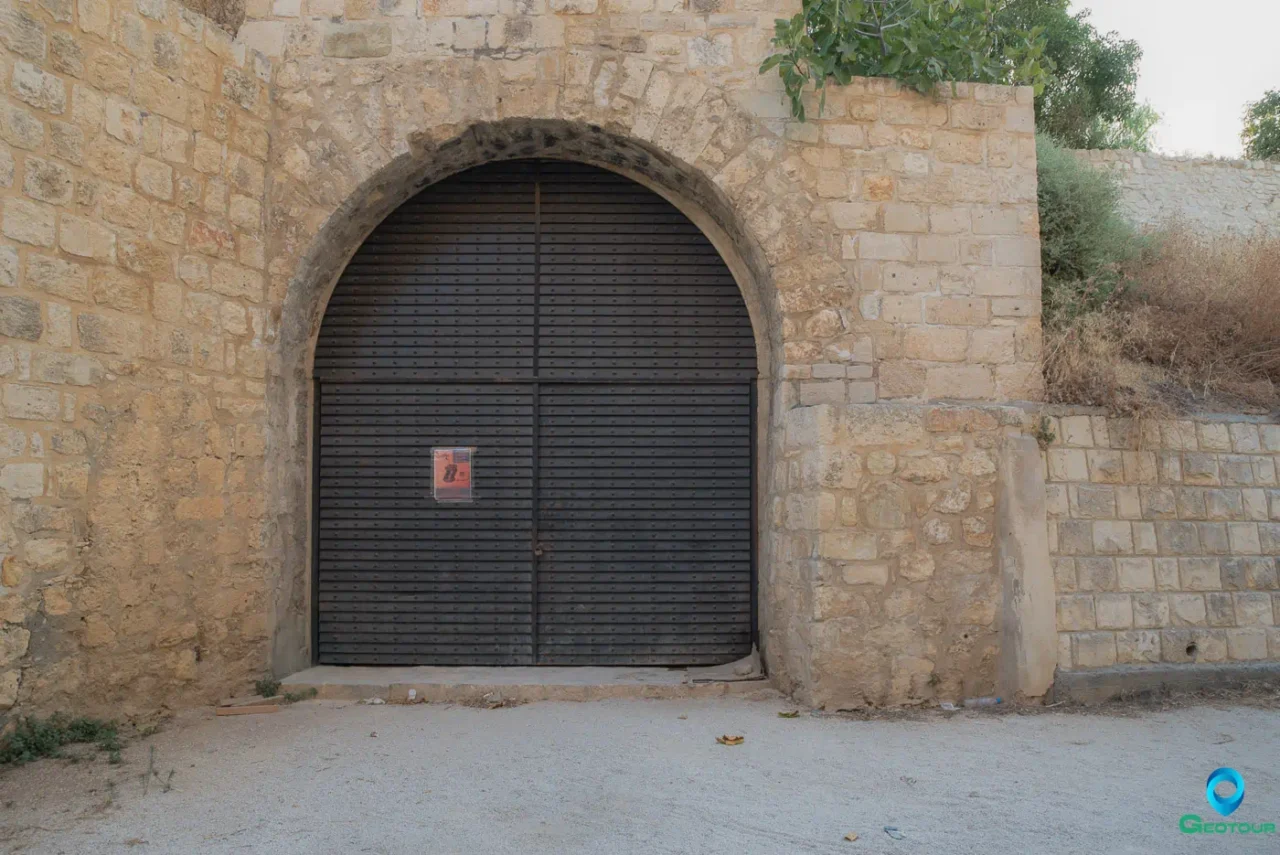
The Pantokrator Bastion and Gate (Panigra Gate), also known as the Chanioporta, stand as prominent features of the western side of the Heraklion Walls. Constructed in the mid-16th century, this bastion and gate played a crucial role in the city’s defense and served as a vital access point.
Design and Construction
The Pantokrator Bastion is a massive, heart-shaped structure, a typical design element of Venetian fortifications. Its purpose was to withstand heavy cannon fire and provide a wide field of fire for the defenders. The bastion is encircled by a deep moat and was equipped with numerous cannons.
The Pantokrator Gate, located on the landward side of the bastion, is adorned with a relief of Christ Pantokrator, signifying the “ruler of all.” The gate is flanked by two imposing Doric columns and topped with a triangular pediment. The inscription above the gate reads “OMNIPOTENS,” meaning “all-powerful.”
Opening of the Chanioporta
In 1915, to accommodate the growing traffic flow, a decision was made to open a passage through the Pantokrator Bastion and Gate. This opening was part of a broader initiative to modernize Heraklion and enhance transportation. The decision was met with a mix of opinions, as some expressed concerns about the potential impact on the historical integrity of the fortifications. Nevertheless, the opening proceeded, and the Chanioporta evolved into a major thoroughfare for vehicles entering and exiting the city.
The Two Gates of Pantokrator
The Pantokrator Bastion actually houses two gates: one for civilians and one for soldiers. The civilian gate is located on the outer side of the bastion, while the military gate is located on the inner side. The civilian gate is more ornate than the military gate, and it is decorated with a relief of Christ Pantokrator. The military gate is simpler in design, and it is decorated with a relief of the Venetian lion of St. Mark.
The two gates were used to control the flow of people in and out of the city. The civilian gate was used by ordinary people, while the military gate was used by soldiers and other officials. The two gates were also used to defend the city. The civilian gate was protected by a drawbridge, and the military gate was protected by a portcullis.
Secrets of the Pantokrator Gate
The Pantokrator Gate is a source of many secrets and legends. One legend says that the gate is haunted by the ghost of a Venetian soldier who was killed during the Siege of Candia. Another legend says that the gate is a portal to another dimension.
Whatever the truth may be, the Pantokrator Gate is a fascinating and mysterious place. It is a reminder of the rich history of Heraklion, and it is a place that is sure to capture the imagination of all who visit it.
Opening to the Public
For a considerable period, the Pantokrator Bastion and Gate were closed to the public. However, recent years have witnessed efforts to restore and open sections of the fortifications to visitors. In 2002, the passage through the Pantokrator Bastion was closed to vehicular traffic, and the pedestrianization of the area was finalized in 2024. This allows visitors to fully appreciate the historical significance of these structures and enjoy the panoramic views from the top of the bastion.
Role in the Siege of Candia
The Pantokrator Bastion and Gate were heavily involved in the fighting during the Siege of Candia (1645-1669). The Ottomans launched numerous attacks to breach the city’s defenses, but the Venetian defenders repelled them. The Pantokrator Bastion, with its commanding view of the surrounding area, proved crucial in the city’s defense. It allowed the Venetians to effectively direct their fire and maintain a strategic advantage.
Current Status
Today, the Pantokrator Bastion and Gate are well-preserved and serve as a popular tourist attraction. Visitors can stroll through the gate, explore the bastion, and delve into the rich history of the fortifications. The area around the bastion has been transformed into a pedestrian-friendly zone, creating a welcoming public space for both residents and tourists.
Interesting Facts
-
The Pantokrator Bastion and Gate are featured in the 2004 book “Heraklion and its Area: A Journey Through Time,” which provides a comprehensive look at the region’s history, archaeology, literature, and society.
-
The inscription above the gate, “OMNIPOTENS,” serves as a powerful reminder of the bastion’s strength and strategic importance in the defense of Heraklion.
Fortifications: Key Points
- Construction Period: Mid-16th century
- Location: Western side of the Heraklion Walls
- Dimensions: Massive, heart-shaped bastion
- Historical Significance: Vital access point, crucial in the defense of Heraklion during the Ottoman siege
- Current Status: Well-preserved, popular tourist destination, open to the public
References
- Gerola, G. (1905). I monumenti veneti dell’isola di Creta: Ricerche e descrizione fatte dal dott. Giuseppe Gerola. (Venetian Monuments of the Island of Crete: Research and Description by Dr. Giuseppe Gerola.). Venice: Workshops of the Italian Institute of Graphic Arts.
- Sythiakaki, V. (2020). The Heraklion Fortifications: A Different View. In N. Chr. Stampolidis & E. Papadopoulou (Eds.), Crete: Emerging Cities. Athens: Museum of Cycladic Art-ΥΠΠΟΑ.
- Georgopoulou, M. (2001). Venice’s Mediterranean Colonies. Architecture and Urbanism. Cambridge: Yale University-Cambridge University Press.













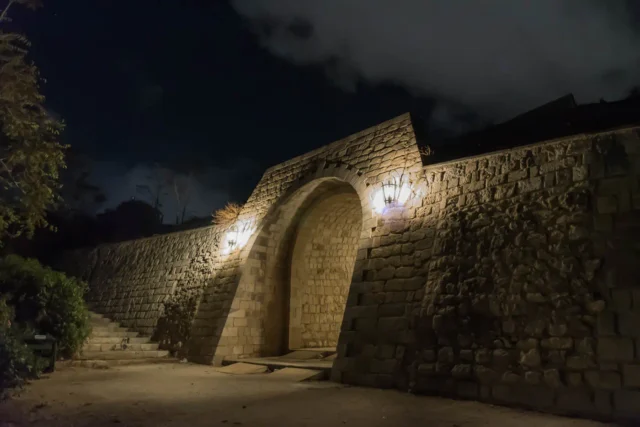

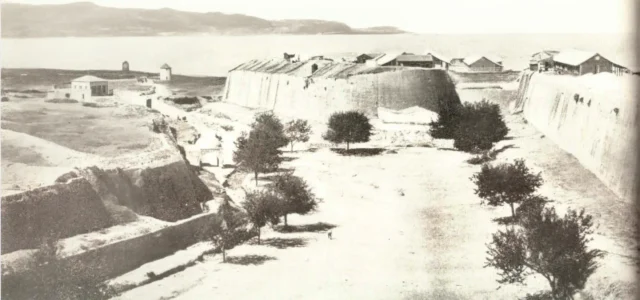

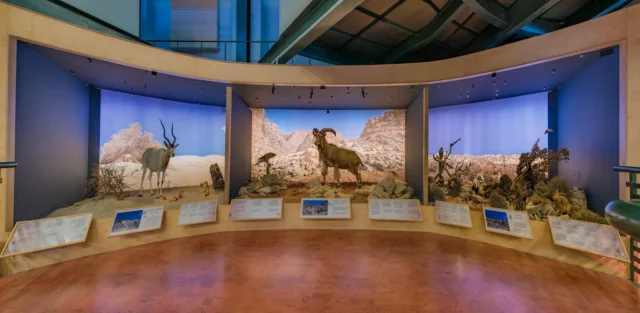

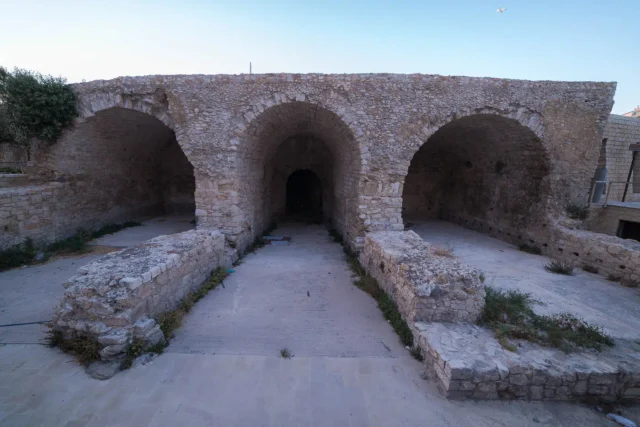

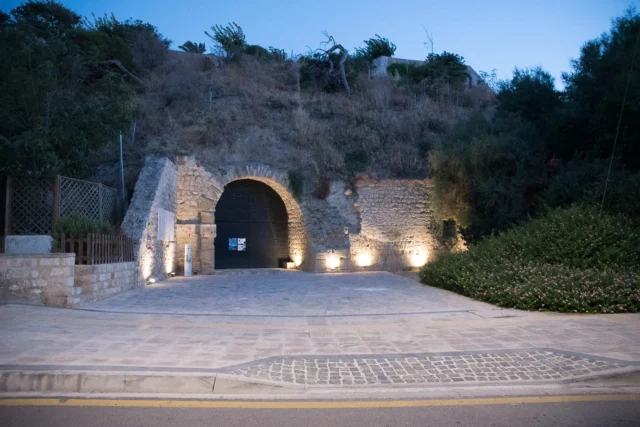
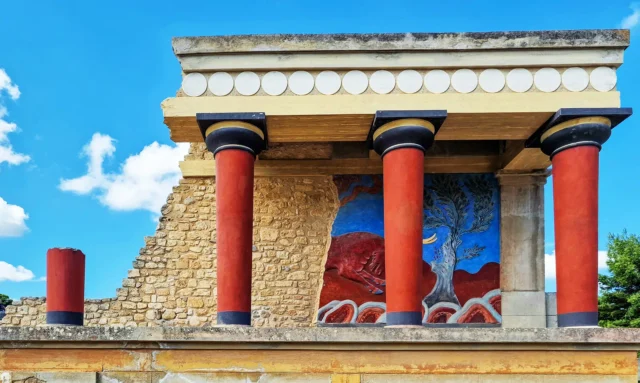
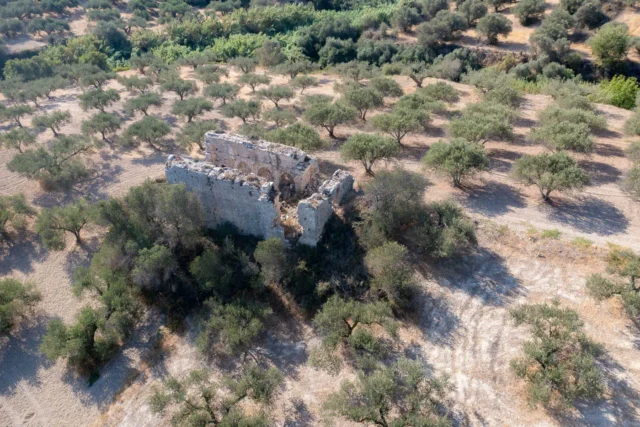



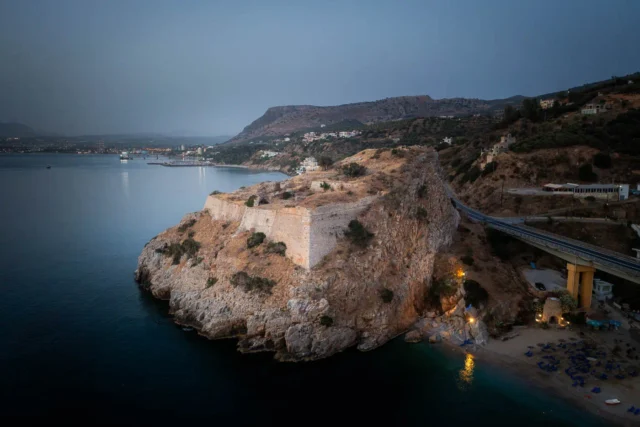
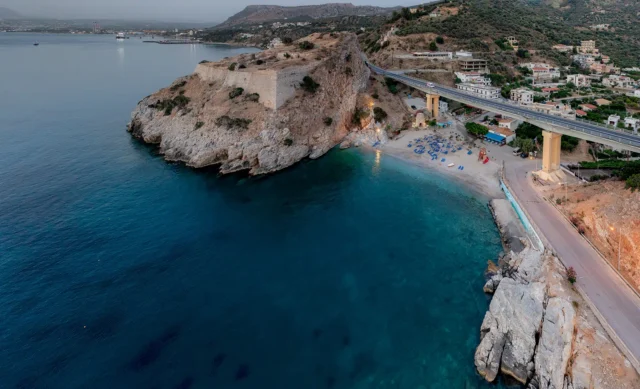

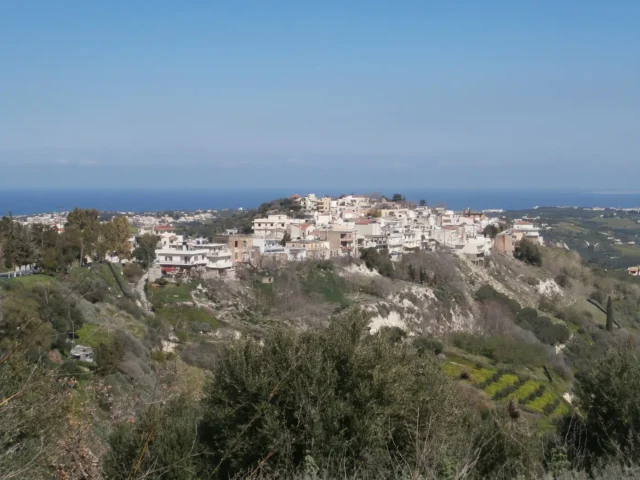
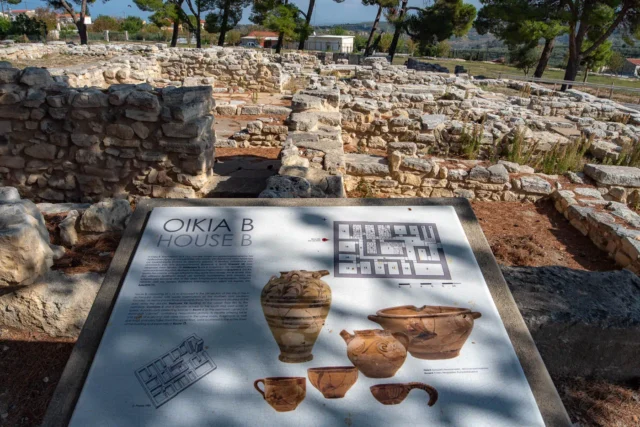
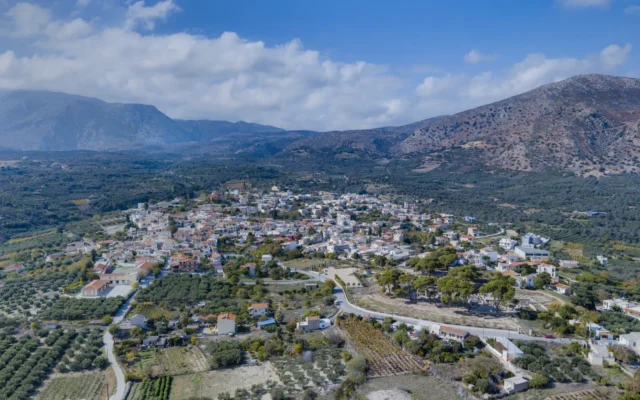

There are no comments yet.